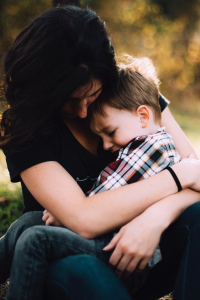Epigenetics and Neuroplasticity
“Nature and Nurture? – it’s not either / or, they cannot be separated!”
You’ll likely be aware that the information required to create a human being is held in our genes, and that at conception a foetus receives half its genes from its mother and half from its father. Together these form our own individual genome.
 Each and every cell in our body contains our entire genome, and yet at some point in our early development different qualities are activated in each one, such that it becomes a heart cell, or a brain cell, or one of many other cells performing specialised actions throughout the body. In order for this to happen, at some point an instruction has to be given that determines which part of the genome held in the cell, is activated to allow it to take on its specialised role.
Each and every cell in our body contains our entire genome, and yet at some point in our early development different qualities are activated in each one, such that it becomes a heart cell, or a brain cell, or one of many other cells performing specialised actions throughout the body. In order for this to happen, at some point an instruction has to be given that determines which part of the genome held in the cell, is activated to allow it to take on its specialised role.
It's apparent however, that the activation of particular qualities within cells doesn’t just take place in our early development. Rather, it’s something that is present throughout our lives. In some instances it’s more generally observable, for example during puberty, when parts of our genetic code become activated, leading to significant bodily and psychological changes. More broadly however, changes will be far more individualised, determined by specific environmental factors, demonstrating that development is not determined by genes alone.
It might be for example, that a child whose parents had spent years in highly stressful environments, might be born with a heightened stress response. However, if they themselves were raised in a highly supportive, secure and peaceful environment, it’s quite possible that their stress response would be reduced. It is the individual’s genetic predisposition allied with their experience and their environment that determines the extent to which specific aspects of their genetic code are activated, turned on or off. Similarly, someone might have a genetic predisposition for a particular illness, but again, the likelihood of their getting it will also be affected by their environment and their behaviours. It is this epigenetic process that determines our ability to change traits. What’s most important however, is a recognition of the fact that the capacity for change is built in to each and every one of us. Our brains are not fixed, rather they are plastic, mouldable and capable of learning new skills, beliefs and attitudes, as well as of unlearning things which before we may have thought of as being fixed and permanent.
One oft quoted example of the brain’s capacity for change is that of London taxi drivers. The intensive study required to learn “The Knowledge” ie the road layout of London, traffic patterns, likely trouble spots, and so on, has been proven to lead to an increase in the size of an individual’s hippocampus. This area of the brain holds aspects of memory and spatial maps, demonstrating that we have the flexibility to turn on genes that create new neurons and synapses when these are necessary for us to learn particular knowledge or skills.
Eleanor A. Maguire, David G. Gadian, Ingrid S. Johnsrude, Catriona D. Good, John Ashburner, Richard S. J. Frackowiak, and Christopher D. Frith
PNAS April 11, 2000 97 (8) 4398-4403; https://doi.org/10.1073/pnas.070039597
Another study, examining the brains of mice, found that in the parts of the brain most important for learning, some 20% of synapses, the links that embed learning and behaviours, were lost or replaced in any 24 hour period. Such constant change requires huge amounts of energy, so why does the brain go through this process? The reason is that it is an essential mechanism in our capacity to learn and unlearn in response to new information that we are taking in. it allows us to adapt to changed circumstances.
A brainwide atlas of synapses across the mouse life span
Mélissa Cizeron Science 17 Jul 2020:
Vol. 369, Issue 6501, pp. 270-275
DOI: 10.1126/science.aba3163
Why is this important?
An appreciation of the fact that through the processes of epigenetics and neuroplasticity we have the capacity to change, is highly important. It means that, hard though it may sometimes be, we know scientifically that we can change negative patterns of thought and behaviour that we might previously have thought were fixed and inevitable.
At an organisational and societal level this means we can know that by providing the right resources and the right structures, we can improve the wellbeing of communities.
At an individual level, it means that by adopting more open and adaptive ways of thinking we can increasingly experience a higher level of wellbeing, and in ways that benefit those around us as well as us as individuals.
“I never lose – I win or I learn” – Nelson Mandela




